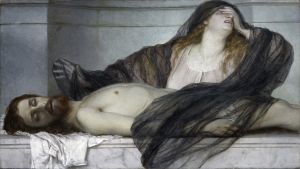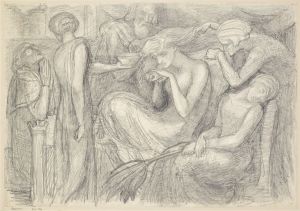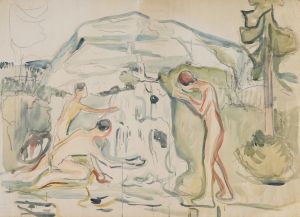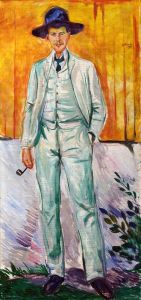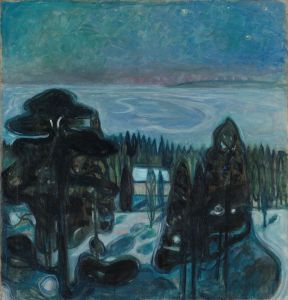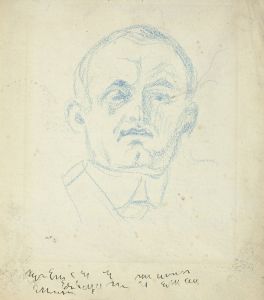
The Dead Mother and Her Child
A hand-painted replica of Edvard Munch’s masterpiece The Dead Mother and Her Child, meticulously crafted by professional artists to capture the true essence of the original. Each piece is created with museum-quality canvas and rare mineral pigments, carefully painted by experienced artists with delicate brushstrokes and rich, layered colors to perfectly recreate the texture of the original artwork. Unlike machine-printed reproductions, this hand-painted version brings the painting to life, infused with the artist’s emotions and skill in every stroke. Whether for personal collection or home decoration, it instantly elevates the artistic atmosphere of any space.
"The Dead Mother and Her Child" is a painting by the Norwegian artist Edvard Munch, created in 1899. Munch is renowned for his evocative and emotional works, often exploring themes of existential angst, illness, and death. This particular painting is a poignant representation of grief and loss, consistent with Munch's broader oeuvre.
The painting depicts a young girl standing in the foreground, her eyes wide with a haunting, almost vacant expression. Behind her, on a bed, lies the lifeless body of her mother, covered in a white sheet. The stark contrast between the living child and the deceased mother creates a powerful visual impact, emphasizing the theme of death's intrusion into the innocence of childhood.
Munch's use of color and composition in "The Dead Mother and Her Child" is significant. The somber tones and the claustrophobic setting enhance the painting's emotional intensity. The girl's red dress stands out against the muted background, drawing the viewer's attention to her and her emotional state. The brushwork is expressive, with loose, almost frantic strokes that convey a sense of turmoil and despair.
This painting is part of Munch's "Frieze of Life" series, which includes some of his most famous works, such as "The Scream" and "The Dance of Life." The series explores the human condition, focusing on themes of love, anxiety, and death. "The Dead Mother and Her Child" fits within this context, illustrating the profound impact of death on the living.
Munch's own life experiences heavily influenced his work. He lost his mother to tuberculosis when he was just five years old, and his sister Sophie died of the same disease when he was fourteen. These early encounters with death left a lasting impression on Munch, shaping his artistic vision and thematic preoccupations. "The Dead Mother and Her Child" can be seen as a reflection of these personal tragedies, capturing the raw, unfiltered emotions associated with loss.
The painting is held in the collection of the Kunsthalle Bremen in Germany. It has been exhibited in various international exhibitions, contributing to Munch's reputation as a master of psychological expressionism. The work continues to resonate with audiences today, offering a powerful exploration of the universal experience of grief.
In summary, "The Dead Mother and Her Child" is a significant work within Edvard Munch's oeuvre, exemplifying his ability to convey deep emotional states through his art. The painting's exploration of death and its impact on the living remains a poignant and compelling subject, reflecting both Munch's personal experiences and broader human themes.






